What to consider when investing in REITs
Case Notes 31. Using AmFirst REIT as a case study, this article looks at the factors to consider when investing in REITs.
The Bursa Malaysia REIT Index as of 5 Dec 2022 was about 20 % lower than that in Dec 2020. The bulk of a REIT’s assets is in real properties. If property prices have not declined by 20 %, you might think that REITs are cheap based on the Asset Value. You may think that because of this, there is an investment opportunity.
At the same time, the declining unit price may mean that the Dividend Yield could be higher than what it was in the past.
But you should not just look at whether it is cheap based on common metrics such as Price to Book, FFO Yield (Funds from Operations Yield), or even Dividend Yield.
Rather you should also consider its current Debt position and gauge whether its growth would be value accretive. This is because of the unique nature of a REIT.
REITs have to pay out at least 90% of their earnings as Dividends. This means that there are very few earnings retained to fund new acquisitions. REITs need to fund acquisitions from either Debt or new Capital. New Capital via unit issuance will dilute the value of the existing unitholders.
Join me as I illustrate this particular characteristic so that you know what to look for when assessing whether to invest in a REIT. I will use AmFirst REIT (AmFirst) to illustrate the various points.
Should you go and buy it? Well, read my Disclaimer.
Contents
- AmFirst profile
- How REITs secure the funds to grow
- Assessing whether a REIT is an investment opportunity
- Value accretive opportunities
- Assessing Unitholders’ value creation
- Conclusion
I assumed that you are familiar with REITs. If you are not, refer to the following:
I am a value investor. I look for margins of safety when considering whether to invest in a REIT. Margins of safety can come in many forms.
- I look for Dividend Yield to be more than that from an alternative safe investment.
- I look for a discount to the Book Value.
- I want the FFO Yield to be better than the property market capitalization rate or rental yield.
At the same time, I want the REIT to have a history of creating unitholders’ value. I used 2 approaches to assess this.
Finally, I look at the Debt to Total Assets ratio to see whether the REIT will have to raise additional Equity to fund new acquisitions. This is because new unit issuance may not be value accretive.
I will start by providing a background of AmFirst before covering the metrics used to assess a REIT. I will then illustrate them with examples based on AmFirst. To enable you to follow the computation, I will provide the formulae as Notes in each of the illustrations/Tables.
AmFirst Profile
AmFirst was listed on Bursa Malaysia in 2007. Over the past 15 years, this REIT had grown from 4 buildings in 2007 to 9 buildings by 2022. AmFirst grew from 1.0 million sq ft in 2007 to 3.2 million sq ft in net leasable areas in 2022. Refer to Chart 1.
The growth in the number of buildings and the leasable area is reflected in the growth of the value of the properties under management. AmFirst today derives its rental revenue from commercial offices, shopping malls, and even one hotel.
Funding Growth
AmFirst growth had come mainly from the acquisition of new buildings. To fund the acquisitions, AmFirst used a combination of Debt and Equity. Refer to Chart 2. The jump in Equity occurred in 2013 following a Rights issue of units.
In terms of Debt Equity Chart 2 shows that this has increased over the years so that it is today almost at a 1.0 level.
For a REIT, the more important leverage metric is the Debt to Total Assets. You can see for AmFirst that most the time, it is above the 0.4 level. It was 0.49 for 2022.
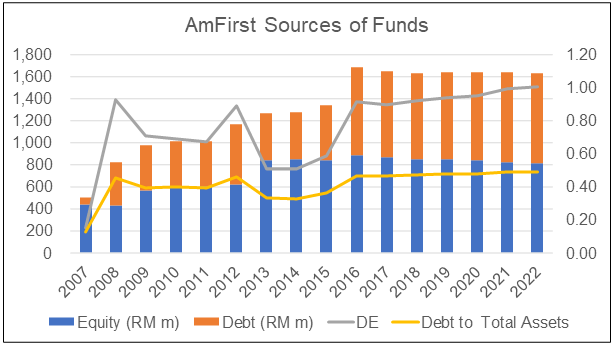 |
| Chart 2: Funding AmFirst Growth |
From a performance perspective, AmFirst grew its revenue by 4 % CAGR from 2007 to 2022. The FFO grew at 2.6 % CAGR. However, PAT declined. Refer to Chart 3.
But the various growths were not steady.
- After a significant jump in revenue and FFO from 2007 to 2009, there was hardly any revenue and FFO growth from 2009 to 2022.
- PAT declined from 2010 to 2022 after spiking in 2009. The PAT growth in 2009 was due to a substantial gain from the revaluation of properties.
 |
| Chart 3: Businsss Performance Note: AmFirst FYE is in March. The 2007 financials were annualize based on 3 months of operations. |
Sources of Growth
The growth in revenue and FFO was driven by a combination of organic growth and inorganic growth. Conceptually, REITs have the following sources of growth.
- Organic – Rental revisions.
- Organic – Improving the occupancies.
- Inorganic – Purchase of new properties.
- In-Organic – Asset enhancements of existing properties
Over the past 15 years, AmFirst had sold off one property and acquired 6 new properties. To identify the contribution from organic and inorganic growth, you should analyze the occupancy and rental per sq ft for each of the buildings. I did not do this as the focus is not on the drivers of growth.
But to give you an overview, Chart 4 shows AmFirst tenancy metrics from 2007 to 2022. You can see that the decline in financial performance as per Chart 3 is the result of a decline in the average occupancy and rent per sq ft.
Note that the averages here refer to the rent and occupancies from several properties.
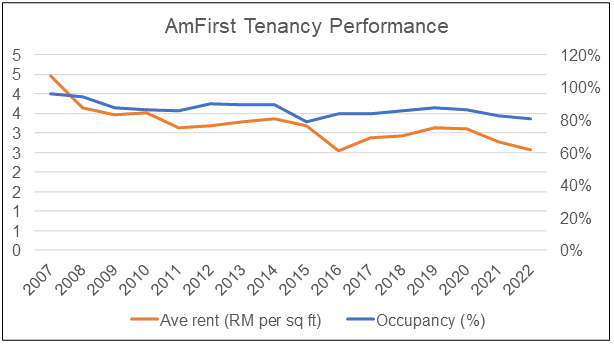 |
| Chart 4: Property Operating Characteristics Note: AmFirst FYE is in March. The 2007 financials were annualize based on 3 months of operations. |
Valuation
Two common valuation metrics for a REIT are Book Value and FFO per unit. Chart 5 shows how the Book Value per unit and FFO per unit for AmFirst has changed compared to the market price per unit.
- The market price of AmFirst had declined by about 59% from 2008 to 2022 whereas the Book Value per unit had increased by 17 %.
- The FFO per unit had grown by 2.7 times when comparing 2022 with 2008.
- In 2008, the market price was 11 % discount to the Book Value per unit. In 2022, this was a 67% discount.
Of course, the price of a REIT would be a function of market sentiments and the REIT’s performance. The comparisons show that the current market sentiment is negative.
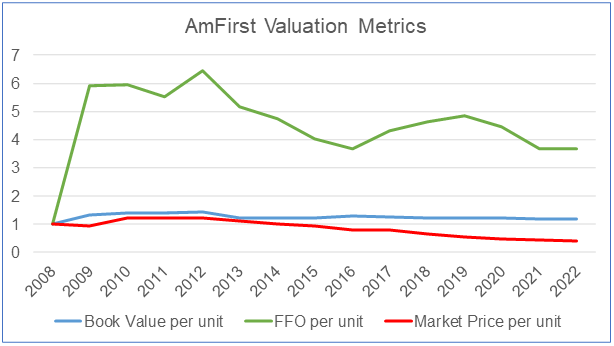 |
| Chart 5: Valuation Trends Note: The index for each metric was computed by dividing the value for each year by the respective 2008 values. |
How REITs secure the funds to grow
To understand how REITs fund their growth, you need to understand the balance sheet of a typical REIT.
Net Assets = Equity + Debt
In other words, the managers of the REIT can fund the new purchases or other capital requirements either by adding to the Equity or Debt.
Unlike normal stocks, REITs are unique in that they have to pay out a significant part of the earnings as Dividends. In the case of AmFirst:
“The Manager intends to distribute at least 90% of the distributable income for each
financial year.” (Source: AmFirst REIT 2022 Annual Report)
As the REITs pay out almost all their cash flow as Dividends, they retain very little cash flow to carry out growth initiatives. To grow, REITs need to tap the either capital markets or incur more Debt.
However, there are Debt restrictions. In the case of AmFirst, it has the following restriction:
“Not exceeding 50% of the total asset value of AmFIRST REIT at the time the borrowings
are incurred.” (Source: AmFirst REIT 2022 Annual Report)
The Securities Commission Malaysia had announced that it will temporarily increase the gearing limit for Malaysian REITs from 50% to 60% until 31 December 2022. The temporary increase in gearing limit will provide the REITs with greater cash flow flexibility.
This will allow the REIT managers to manage their REIT’s Debt and capital structures more efficiently, especially in light of the challenging operating environment during the COVID-19 pandemic.
Given this funding feature, you should not be surprised to see that AmFirst had used both Debt and Equity to fund the past 15 years’ acquisitions.
- When it comes to Debt funding, there is no dilutive impact on the existing unitholders.
- But for Equity funding, there may be a dilutive impact depending on the number of units issued and the unit issuance price.
As such, when you consider a REIT for investment, you need to check on its Debt situation. You will then know whether there would be any unit issuance in the immediate future. Then of course you would have to figure out whether the unit issuance would be value accretive.
In other words, just don’t look at just the Dividend Yield or the discount to intrinsic value when assessing a REIT.
Assessing whether a REIT is an investment opportunity
I used 2 approaches to determine whether there is an investment opportunity:
- Is the Dividend Yield better than the returns from investing in a secured asset? In the Malaysian context, I compare the Dividend Yield with the returns when keeping monies with the Employees Provided Fund (EPF).
- Are prices trading at a discount to the intrinsic value?
Dividend Yield
I defined Dividend Yield = Dividend / Market Price. To ensure that the Dividends paid are not skewed by a particular year’s performance, I take the average past 5 years’ Dividends as the number to use.
In the context of AmFirst, the average Dividend declared over the past 5 years was RM 0.0348 per unit. The market price of AmFirst as of 5 Dec 2022 was RM 0.37 per unit.
This would result in a Dividend Yield of = 0.0348 / 0.37 = 9.4 %.
This is significantly greater than the average 5 % Dividend from the EPF. As such I would consider AmFirst an investment opportunity based on this criterion
Discount to intrinsic value
There are two general ways to determine the intrinsic value of a stock or REIT:
- Asset-based. Using the analogy of a house valuation, this is equal to determining the value of a house by looking at the land and construction cost.
- Earnings-based. In the house valuation analogy, the is valuing a house based on the rental income received less the cost of maintaining it.
In the context of REITs, there are two common metrics to assess whether there is an investment opportunity.
- Comparing market price to Book Value.
- Comparing the FFO Yield to the property market cap rate.
Price to Book
Properties generally constitute the bulk of a REIT’s assets. In the Bursa Malaysia context, these properties are generally revalued every year. As such the Book Value of a REIT reflects the current market value of all the properties owned by the REIT. In other words, the Book Value is a good indication of the intrinsic value of the REIT.
In practice, I would consider that there is an investment opportunity if a REIT’s market price is less than 80% of the Book Value. I do not use the full Book Value as theoretically, if the REIT sells off all its properties, there would be taxes to consider.
In the context of investing in AmFirst, the current price to Book Value = RM 0.37 / RM 1.18 = 0.31.
In other words, AmFirst is trading at a 31% discount to its 2022 Book Value. I consider this a good margin of safety.
FFO Yield
The Book Value is an Asset-based valuation. Another way to determine the intrinsic value is to base it on its Earnings. According to Investopedia, metrics such as EPS and P/E ratio do not apply to REITs. For REITs, a more reliable method is the FFO.
FFO is calculated by adding to the profits any depreciation, amortization, and losses on sales of assets, and then subtracting any gains on sales of assets and any interest income.
- Investment properties increase in value over time, making depreciation inaccurate in valuing a REIT. Depreciation and amortization must be added back to net income to reconcile this issue. (Note: depending on the accounting policy, many Bursa REITs do not account for deprecation when computing the earnings).
- FFO also subtracts any gains on sales of property or re-valuation because these are considered to be non-recurring.
Once you have derived the FFO, you can then estimate the FFO per unit. You then determine the FFO Yield = FFO / Market Price. This is equivalent to the Earnings Yield for a stock.
If the FFO Yield is greater than the property market’s capitalization rate or rental yield then it is cheap.
In the context of AmFirst, the past 10 years’ average FFO per unit was RM 0.091 per unit. Given the market price of RM 0.37 per unit, we have the FFO Yield = RM 0.091 / RM 0.37 = 25 %.
You can see that this 25% is a very good return compared to the average commercial rental yield of 4 % to 5%.
Summary
Table 1 summarizes the results of the various metrics. At the current price, AmFirst is an investment opportunity since it performed better than the benchmarks.
 |
| Table 1: Is AmFirst Cheap? |
Value accretive opportunities
I have mentioned that because of the funding characteristics of a REIT, you need to check on its Debt position. This will enable you to gauge whether future acquisitions by the REIT would be value accretive.
Let me illustrate this with some examples from AmFirst.
- In 2008 and 2009, AmFirst acquired Kelana Brem Tower (later renamed Wism AmFirst) and The Summit respectively. These were funded via Debt.
- In 2013, AmFirst acquired Jaya 99 via a Rights Issue.
- In 2016, AmFirst sold off the Ambank Leadership Centre and bought Mydin Hypermarket. The acquisition was funded partly by Debt and the sale.
Let us see the impact of these 2 categories of funding on the Book Value per unit and FFO per unit.
Table 2 shows situations where the acquisitions were funded via Debt and/or internally generated funds. You can see that Book Value increase post-acquisitions. The FFO per unit did not show any decline.
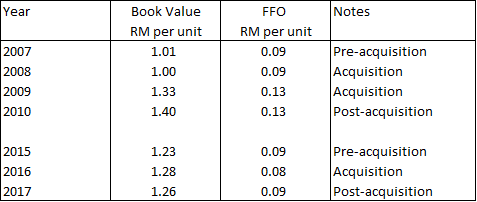 |
| Table 2: Impact of Debt Funding |
Compare the situation with the funding via Equity as shown in Table 3. You can see that the Book Value per unit and the FFO per unit had declined. This is because the new units were issued at a discount to the market price. At the same time, the additional units reduced the Book Value per unit and FFO per unit.
 |
| Table 3: Impact of Funding with New Capital |
If you were an existing unitholder of AmFirst in 2012 and did not subscribe to the Rights issue, you would be at a disadvantage.
Even if you had subscribed to the new units, you would be at a disadvantage. Table 4 illustrates such a situation:
- If you had bought AmFirst in 2012 at the then market price of RM 1.15 per unit, you would have a 25 % margin of safety. This was derived by comparing the 2012 Book Value of RM 1.44 per unit with RM 1.15 per unit.
- If you had subscribed to the Rights, your average cost would be reduced to RM 1.03 per unit. But then the Book Value would also have reduced to RM 1.24 per unit resulting in a 20% margin of safety.
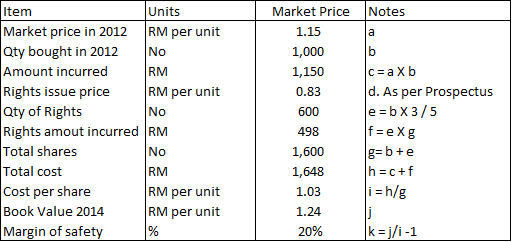 |
| Table 4: Estimating the Margin of Safety Post Right |
My main point is that if the Debt to Total Asset ratio is around its limit, any new acquisitions would have to be funded by Equity. If the new units are issued at a significant discount, there would be more units issued. This will likely not be value accretive.
I am not saying that all new unit issuance will reduce unitholder’s value. This will depend on the new unit issue price and quantity. This is not a simple analysis as it will also depend on the existing value compared to the value of the acquired properties.
In practice, I develop a separate financial model to assess the impact as there are many moving parts.
At this juncture, I would highlight that you should look at the Debt situation before investing in any REIT. If the REIT is already at the Debt to Total Asset limit, you may have to do a more detailed impact analysis.
In the case of AmFirst, its Debt to Total Assets in 2022 was 0.49. This meant that to grow via property acquisitions, it will have to rely on new Equity. Given its historical value reduction record, would it be able to issue new units in a value accretive manner?
To answer this question, I would have to rely on a separate financial model. But this is a story for another day.
Assessing Unitholders’ value creation
In addition to what I have presented, I would also consider unitholders’ value creation when assessing a REIT.
There are 2 ways to assess whether AmFirst has created unitholders’ value. Both look at the returns a unitholder would have if he had bought it in 2007 and held onto it till today.
- Based on market price. This is looking at the capital gain based on the current market price.
- Based on a look-thru basis. This is a metric made famous by Warren Buffett. Essentially as a unitholder, you own part of the intrinsic value of the REIT. I have taken the Book Value to represent the intrinsic value.
Your return from investing in REITs comes from both the Dividends and the Capital Gain.
Total Gain = Total Dividend + Capital Gain.
Return = Total Gain / Cost.
Where
Capital Gain = Current Market Price – Cost.
The total returns assuming that you had bought 1,000 units in AmFirst in 2007 at RM 0.96 per unit and held onto them are:
- 1.8 % CAGR based on the market price.
- 5.3 % CAGR based on the Book Value.
Considering that the annual return from keeping your money with the EPF is about 5%, this is not a fantastic return from the REIT.
Tables 5 and 6 illustrate the computation. Other key assumptions in the computation are:
- You subscribed to the 3 for 5 Rights issue in 2012/13. You thus spent a total of RM 1,458 (refer to Note g) for 1,600 units (refer to Note f).
- Your Capital Gain (refer to Note j) = value of the units at the current market price – RM 1,458.
- The total Dividends (refer to Note m) = Dividends before the Rights + Dividends after the Rights.
Based on the market value, I estimated that the Total Gain = RM 344 over the period from 2007 to 2022 I estimated that this is equivalent to a CAGR of 1.8 % per year. Refer to Table 5.
Based on the Book Value, I estimated that the Total Gain = RM 1,245 over the period from 2007 to 2022 I estimated that this is equivalent to a CAGR of 5.3 % per year. Refer to Table 6.
 |
| Table 6: Computing Unitholder's Gain Based on Book Value |
Conclusion
I am a value investor. To consider whether a REIT is an investment opportunity, I look at whether there is a margin of safety at the current price.
In the context of a REIT, I look at the following:
- Whether the Dividend Yield can provide a better return than the EPF.
- Whether it is trading at a discount to the intrinsic value. I used 2 metrics to represent the intrinsic value.
- 80 % of the Book value per unit as the intrinsic value. I then compare this with the market price looking for more than 20% to 30 % margin of safety.
- FFO Yield per unit. I want a yield that is 20 % to 30 % higher than the property market capitalization rate or rental yield.
- Whether there is a history of unitholders’ value creation. I consider 2 approaches looking for a CAGR that is better than the EPF return. I look at Total Return.
- Based on the market price.
- Based on a look-thru basis by using the Book Value.
The key points are:
- For an existing unitholder, you should look at per-unit performance as the REIT may grow via new issuance.
- REITs distribute most of their earnings as Dividends so that is very little retained earnings. Growth via new properties will have to be funded by Debt or Equity.
- You should also look at whether the New Equity can be value accretive. This in turn will depend on its unit issuance price and the quantity to be issued.
The focus of this article is to point out the various metrics to consider when evaluating whether a REIT is an investment opportunity. While I have used AmFirst to illustrate the various computations, it is not meant to be as assessment of AmFirst.
I will undertake an assessment of AmFirst in due course but this is a story for another day.
End
- - - - - - - - - - - - - - - - - - - - - - - - - - - - - - - - -
How to be an Authoritative Source, Share This Post
|
Disclaimer & Disclosure
I am not an investment adviser, security analyst, or stockbroker. The contents are meant for educational purposes and should not be taken as any recommendation to purchase or dispose of shares in the featured companies. Investments or strategies mentioned on this website may not be suitable for you and you should have your own independent decision regarding them.
The opinions expressed here are based on information I consider reliable but I do not warrant its completeness or accuracy and should not be relied on as such.
I may have equity interests in some of the companies featured.
This blog is reader-supported. When you buy through links in the post, the blog will earn a small commission. The payment comes from the retailer and not from you.
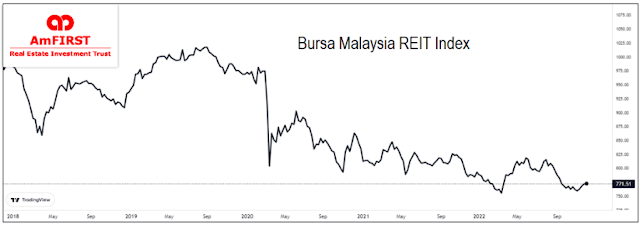
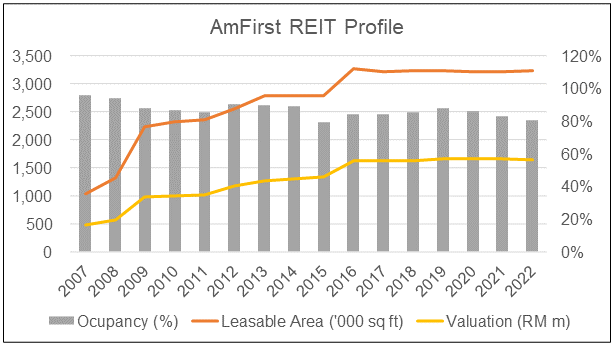





Comments
Post a Comment